In memory of the victims of the 16 settembre 1943
The allied bombing of Buccino del 16 settembre 1943 represents one of the most painful and tragic events in the history of Buccini. A silent tragedy, that the community has hidden in its most intimate folds, as if to modestly protect the indelible memory.
THE CONTEXT
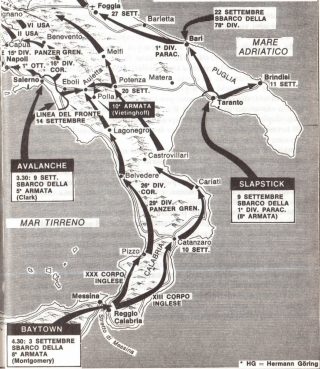
The air raid that took place in Buccino on 16 settembre 1943 is directly connected to Operation Avalanche, the code name of the Anglo-American landing along the Salerno coast. The objectives of the Allies were to take behind the Germans who withdrew from Sicily going up Calabria; take over southern Italy and its strategic airports, first of all that of Foggia; quickly reach Naples and free Rome. Not being able to count on the co-belligerent Italian army, left in disarray by their commanders, fled with the king to the South, the Allies faced fierce resistance from the Germans who at a certain point in the operation seemed to be able to throw the Anglo-Americans back into the sea. On the landing front they had been recalled, indeed, the 3rd and 29th Panzergrenadier Divisions - until then respectively located the first near Rome and the second in Calabria to counter the British advance - which were added to the 16th Armored Division, which was located right at the landing site and had already been alerted on the afternoon of 8 September. In the afternoon of 16 September near Vallo della Lucania the union between the American and British armies took place, in ascent from Calabria, and the Germans, having realized the preponderance of the allied forces, they decided to retreat to Rome.
THE FACTS
Precisely in this phase the inland areas of Salerno, like that of Buccino, they found themselves involved in the war that had been far away and in the days following the landing, they knew the sad reality of aerial bombing, which until then had only affected the larger cities. In fact, the Germans rising from Calabria to Rome, being unable to pass through Salerno, they used the internal roads to retreat, including the SS. 91 that through Contursi allowed to reach Avellino and from there to Naples.
It was really the route followed by the Germans why the Allies that 16 September they bombed the area between Buccino and Contursi. In the previous days and for a few more days they would have brought death and destruction to many towns in the area (first of all Eboli and Battipaglia, but also Serre, Altavilla Silentina, Countryside, Contursi, etc.) with numerous destructive bombings. In all the towns of the diocese of Campagna they eventually counted over 250 victims.
After the landing of Salerno, even the innermost areas were subjected to continuous surveillance and allied aviation raids with the aim of slowing down and, wherever possible, to prevent the retreat towards Naples and Rome of the German divisions which were south of Salerno. Already before 16 September the sky of Buccino had been affected several times by the passage of allied aircraft, both those directed to the landing areas and by the scouts who had the task of verifying and documenting the presence of the Germans and their position. They usually passed in the late afternoon, even throwing candy, chocolates and leaflets in which they informed the population of the approaching liberation and invited them not to collaborate with the Germans.
It was one of these scouts, who flew over Buccino il 15 settembre, to locate, under the plane trees of Viale Marconi, a German column that, coming from the south, that same morning she had gone back into town from the National Road below, arousing the justified fears of the Buccinese population. The night between 15 e il 16 September a German captain who was in charge of the column, accompanied by some soldiers armed with machine guns, under threat of bombing the country, he demanded from the Buccinesi the supply for the following day of a certain quantity of meat necessary for their sustenance and that of their Italian and allied prisoners. Marshal Amedeo Cerreto, commander of the Carabinieri station and military governor of the country, he invited the citizens to collaborate to obtain from the owners what the Germans had requested. For the same purpose the mayor Ernesto Grieco also worked to avoid tragic reprisals against the town. Thanks to the commitment of the accountant Beniamino Mastursi and the Fuccia brothers, his cousins, cattle owners were persuaded to deliver the meat. The morning of 16 September it was realized that fortunately the German column had left during the night and without withdrawing the promised meat. The reason for the behavior of the Germans is still unknown today, perhaps linked to orders received during the night or to information about allied movements.
The town thought it had regained the tranquility that had characterized it until the previous day, but unfortunately this was not the case. Between the 17.51 and the 17.52 of that tragic Thursday 16 settembre what no one could ever have imagined happened. The roar of some planes arriving in the clear sky of Buccino did not cause any alarm in the population given the passage, in the previous days, of many aircraft bound for or returning from combat areas in the Eboli Plain and on the Salerno coast. This time, however, it was neither reconnaissance aircraft nor passing aircraft, but of bombers that had our area as their target. The documentation found in the English archives has allowed us to identify them with a formation of "Martin Baltimore" bombers of the Royal Air Force. (RAF), the British aviation, composed by 12 aircraft belonging to the 223rd squadron, who were accompanied in action by others 12 of the 55th Squadron and escorted by 12 hunting, of an unspecified squadron. The crews were made up of British soldiers, Australians, New Zealanders, Canadians and South Africans.
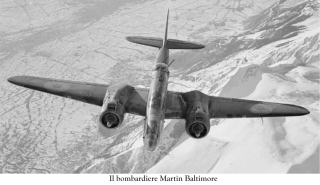
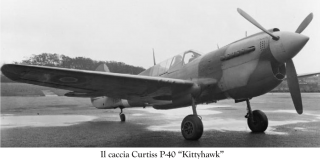
The found documentation attests that the objective of the mission of the two squadrons was the bombing of the road connecting Contursi and the Balvano area, in order to block the advancement of the German military columns that moved along it, and had among its objectives also the inhabited centers of Buccino and Contursi. In Contursi and its vicinity she was concentrated at that moment, indeed, most of the German forces present in the area (the 10th Army led by General Heinrich Scheel Von Vietinghoff and the 29th Panzer Division).
The planes of the 223rd squadron had taken off at 16.30 from the base of Gerbini 3 (west of Catania in the area now known as Sigonella) led by squadron lieutenant Walter Sidney Chubb and navigating officer L. G. Walker. The planes of the 55th squadron had also departed from the same runway, led by squadron leader D. H. Hannah, while the escort fighters had joined the group at 17 near Milazzo. Following the established route, which passed east of Stromboli and, then, of Punta Licosa, they reached the gulf of Salerno and then headed towards their goals. A first group of six planes of the 223rd squadron took charge of bombing the road that led from Contursi to Buccino: the bombs also touched the town of Contursi and hit the south-east side of the route.
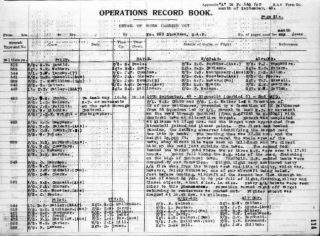
The second group of six aircraft of the same squadron, coming from the Contursi area, instead it caused little damage to the road because it was identified too late by the drivers, that at 17.51 instead they managed to hit the entire town of Buccino. The bombing of the center of Buccino and the streets surrounding the town was also filmed with a camera by the operator James Ernest Frederick Wright, an English soldier positioned on one of the squadron's planes. The precious images of this video (preserved at the Imperial War Museum in London) they allow us to understand which areas of the country were affected. The bombs, which were those of small to medium caliber (250 lb) commonly called "incendiary clips", they were thrown from a height of ten thousand feet. The whole thing lasted a little over a minute. Then the planes, as quickly as they had appeared, they moved away from the skies of Buccino and, then passed west of Sapri, they returned to their respective starting bases. When the bombers disappeared, from the cloud of dust raised by the bombs, the tragedy and destruction that had struck Buccino appeared in all its breadth.
The first bombs fell on the edge of the road near the town in the Rizzi area and then in that of Fondoni and Sarnese. Subsequent bombs instead hit the entire country. A "crawl", starting from the area of Piazza San Vito, hit the small garden in front of the church of S. Antonio, the area between the bell tower of the same church and the wash house, the areas of the Palace of the Princess, of via Forcella and piazza Amendola, the area around the castle, the area of via Egito and Porta S. Mauro, those of S. Elia, of San Giovanni and finally, Further down, the one near the Annunziata coast, at the beginning of the road that goes up to the sanctuary of S. Maria delle Grazie.
The most chilling scene took place in Piazza S.. Vito, the open space then little inhabited which took its name from the chapel of the same name that then existed there. A few moments before the bombs fell, indeed, an English plane, presumably one of the kittyhawks escorting squadrons, that preceded the bombers at medium-low altitude to neutralize enemy presences and destroy any anti-aircraft defenses, he fired two machine-gun shots at the square and at the people at the time. The machine gun took the lives of ten children between the ages of ten and thirteen, guilty only of being in the wrong place at the wrong time, that is, in that square where they went to play almost every day, often disobeying parental orders. Like their other comrades, coming from the different districts of the country, they used to meet in that place because Germans often came in the afternoon and distributed sweets, chocolate and sometimes even cans of meat to take home, but above all to play. They amused themselves with small pieces of wood and sawdust in the middle of the logs of Antonio Tortoriello's sawmill, they slipped adventurously into the water drainage channel that from behind the chapel of S. Vito went down in front of the sawmill or ran happily after a ball of rags in the space in front of the chapel or in the lawn that was just outside the village towards the area of S. Paolo, where the prefabricated building of the old town is now located.
The machine gun hit them unconscious, snatching them in an instant from the games and dreams of their age. Everything lasted a few moments. A few moments later, bombs also completed the destruction, which still brought death throughout the country. At the end Piazza S. Vito was enveloped in an unreal and ghostly silence, broken after a few seconds by the cries of children, seriously injured but still alive, and from those desperate ones of their mothers and fathers. The scene that presented itself to the survivors must have been heartbreaking.
The fathers buried their children, returned from the rubble to miserable wooden boards, between the scream of mothers and the dismay of others
as the Buccinese professor Marcello Gigante wrote recalling those tragic moments.
Some children died instantly while others would have died within hours or a few days from infections caused by deep wounds that could not be cured due to the scarcity of medicines and disinfectants.. As they were found under the rubble of buildings, the bodies of children torn apart by machine guns were placed in the nearby chapel of S. Vito, where they received the last blessing from the parish priest Don Nicola Tuozzo, before they are best transported on a cart to the cemetery. Accompanying them on their last journey were the only heartbroken family members, who also took care of the material burial of their loved ones since almost the entire Buccine population, including also the guardians of the order and some priests, for fear of new bombing she fled the country. Only later was a solemn funeral celebrated for all the victims with the participation of all citizens and authorities. Some witnesses - who, however, do not seem to find confirmation in the memories of Gregorian citizens - said that the mothers of the children would have gone to the nearby S. Gregory the Great to ask the Gregorians to provide them with small coffins that Buccino could not find, gaining the support of the Gregorians and carrying the coffin for her child in a macabre procession. The human tragedy, however, did not stop at Piazza San Vito. Ai 10 machine-gunned children were joined by others 35 deaths caused in various areas of the country by the subsequent bombing. Between these, particularly tragic was the fate of some non-Buccinese families, coming mainly from the province of Naples, who had been displaced in the country precisely to escape the bombing of the Neapolitan area.
The bombing lasted just over a minute, but it would take the town years to recover the integrity of its buildings and its soul. For several days the dead and wounded were pulled out of the rubble. Luckily some people, wounds from shrapnel from bombs, they managed to be cured and were saved.
Material damage was also enormous: in the country, then inhabited by 7100 people and with a number of 800 rooms pre-existing to the bombing, 100 compartments had been destroyed by bombing, 180 they had been badly damaged, 205 those slightly damaged 205 e 90 were the people left homeless.
Two days after the bombing, the 18 September also the small German garrison already present in the country before 15 settembre, he definitively abandoned Buccino. To make the access road to the town impassable, on leaving they blew up the mines buried off the coast of S.. Vito, where the explosion also destroyed the chapel of the same name, already badly damaged by the allied bombing. The allies arrived a few days later, perhaps already the 19 settembre: both the Americans and the British army arrived (probably of the Canadian wards) but it is unknown who liberated the country.
AND MOTIVES
If understandable and documented, as mentioned, these are the reasons that led to the tragic bombing of the country, even today it is not possible to give a certain explanation for the reprehensible strafing carried out by fighters on children, of which to date, despite a series of research, the perpetrators and motives are ignored, if indeed there were. Perhaps the only possible answer remains that provided by a naval and aeronautical attaché of the British embassy in Italy, who in response to a request for information on the incident replied that to answer his "why", I can only say there was a war going on. Those children were therefore the "collateral damage" of a war, remained distant and almost alien before and after that day, that he would never again abandon the life and memories of the entire Buccinese community. They found themselves to be unconscious objects of an absurd target practice of an unbridled and yet lucid madness of a block of bullishly maddened brains in the mesh of terror and hatred, as Professor Marcello Gigante pointed out in recalling the tragic events of those days.
THE VICTIMS OF 16 SEPTEMBER 1943
- BARTILOTTI ELENA anni 12
- BARTILOTTI IOLANDA years 5
- BARTILOTTI LUCIA years 10
- BARTILOTTI RITA anni 16
- BASILE GIUSEPPE years 12
- CARMELA CANDLE years 19
- CAPUTO VITO years 51
- CATONE ANTONETTA years 23
- CATONE GIUSEPPE years 14
- CHIARIELLO ROSA years 2
- CIPRIANO ANTONIO years 10
- CLEMENTE LUCIA years 29
- DEL CHIERICO ADOLFO years 13
- DEL MONTE CARMELA years 23
- DE LUCIA GERARDO NICOLA years 10
- FONTANA ELIO years 4
- SMOKE PASQUALINA years 11
- GIGLIO GIUSEPPE years 66
- GRIECO CONCETTA years 45
- GRIMALDI COSIMO years 13
- GRIMALDI ERCOLE years 10
- GRASSI GENNARO years 6
- EASTER LEPORE months 11
- LEPORE TERESA years 40
- THE HOLY ARMANDO years 14
- LORDI ROSA years 42
- MARUOTTOLO GIUSEPPE years 46
- MARZOCCA CATALDO years 25
- MONACO GERARDO years 7
- MOSCATELLI ANTONIO months 10
- MOSCATELLI CARMELA years 3
- CARMINE CHRISTMAS years 67
- PARISI GIUSEPPE years 13
- KING SATURDAY years 2
- RUSSO GERARDO years 9
- SALIMBENE FERDINANDO years 10
- ETTORE SHELF years 11
- SCIARRILLO PASQUALINA years 64
- SOLITRO CLOTILDE years 60
- SOLITRO FRANCA years 32
- TUOZZO FRANCESCO years 11
- FOX ANGELA years 60
- FOX CONCETTA years 56
- ZINNO ANTONIO years 62
- ZITAROSA TERESA anni 18
THE MEMORY
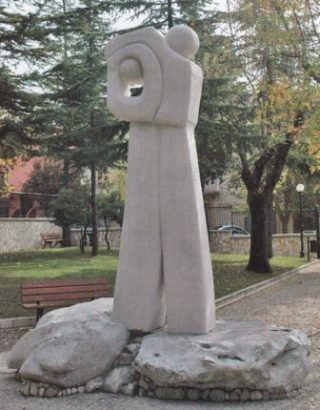
The 5 novembre 2005 in memory of the massacre, the Municipal Administration installed the sculpture in the local Parco della Rimembranza “Lives at stake” donated for this purpose by the Salerno artist Bartolomeo Gatto at the request of the Buccine writer Enzo Landolfi.

The 14 e 15 settembre 2013 the Municipal Administration in collaboration with the research group “Buccino nella Storia” celebrated the 70th anniversary of the massacre with a two-day demonstration, where it was presented the volume that historically reconstructs for the first time the events of 1943, the original video of the bombing was shown and the theatrical monologue was performed “The rag ball”, written specifically for the occasion and beautifully interpreted by the Salerno-based actor Claudio Lardo (Trailer – Preview).
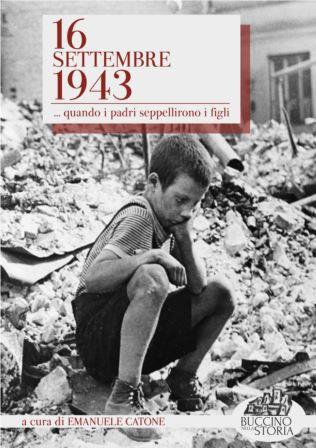
 With Council resolution of 16 settembre 2013 the Municipal Administration of Buccino requested the Presidency of the Republic for recognition of the medal for civil valor for the facts of 16 settembre 1943. The 26 novembre 2013 at the Chapter Hall of the Senate of the Republic al Municipality of Buccino the Presidency's Representation Award was awarded della Repubblica in memory of the young victims of 16 settembre 1943.
With Council resolution of 16 settembre 2013 the Municipal Administration of Buccino requested the Presidency of the Republic for recognition of the medal for civil valor for the facts of 16 settembre 1943. The 26 novembre 2013 at the Chapter Hall of the Senate of the Republic al Municipality of Buccino the Presidency's Representation Award was awarded della Repubblica in memory of the young victims of 16 settembre 1943.
Emanuele Catone
TO KNOW MORE':
E. Catone, 16 September 1943…quando i padri seppellirono i figli. Il bombardamento alleato di Buccino, Buccino 2013.
A. Fish, Salerno 1943 “Operation Avalanche”, Salerno 19962.

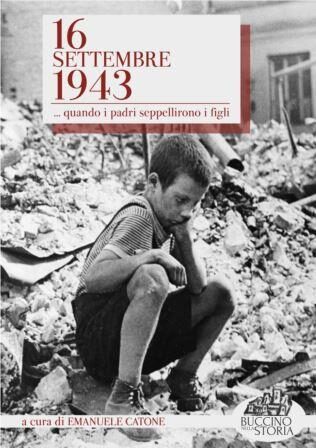
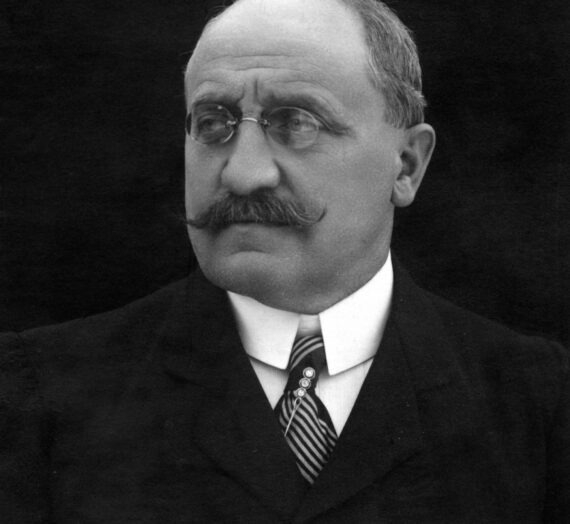

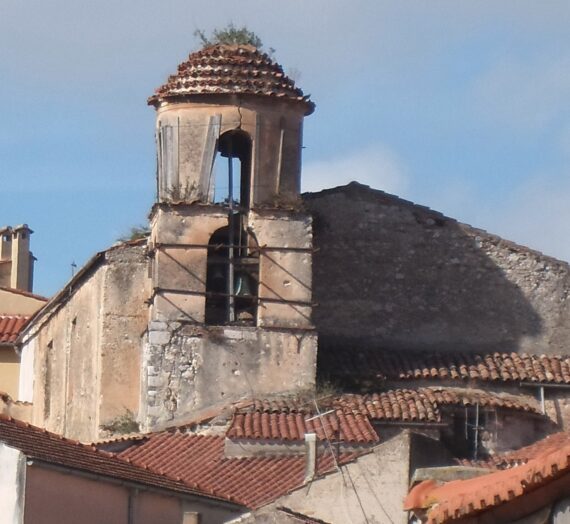
Agustin Rey
My grandfather (Antonino Fumo) he was Pasqualina's brother. He always reminded me of that sad day. His friend Precioso was always in his mind, who had helped him make a simple box for Pasqualina's body.
Giovanni Buccino
We don't know what binds us to Buccino's story, we only know that we have some ancestors in a hypothetical cardinal named Giovanni Buccino who in the 16th century was baptized the town. The story of my mother who washed clothes for the Germans in 1942, displaced from Naples, he went up and down with 2 little ones and one waiting in a truck carrying animals, perhaps he had to support himself so as not to fall to the rickety structures of the old trucks of the past. “Grieco” this surname that we find among the victims of the Allied air raid of that tragic 19 September of 43 it was my mother's surname, here we are in one way or another linked by a sense of solidarity between Italians in a world war that has had no similar, and that I thank the families who helped my mother to go down to Naples with a piece of bread, a pound of lard, a pack of pasta, “a core of cabbage” so as not to let my father die of hunger, my brothers, sisters who were already in 10/11, among 15 children I am the last to relate with reserve these memories transmitted by this woman with great calm, as if it had all happened to others. Red flowers, a prayer to those who have not died, to the victim, To my mother.
Pink Fanelli
For me it is a story that has accompanied me since I was a child .. between the story of my mother who lived it. And I make it alive by transmitting it to mine, because those are the things we must not allow to happen anymore. And I like this site that rightly takes care of this, our memory, our history because when we forget our history we lose our essence.
Clemente Scafuro
16 settembre 1943 is a book? It is possible to have a copy?
buccinonellastoria
Dear Mr. Scafuro, if he is still interested in having the book, contact us on Facebook or via our contact form (http://buccinonellastoria.altervista.org/Sito/contatti/). Yours sincerely, Emanuele Catone